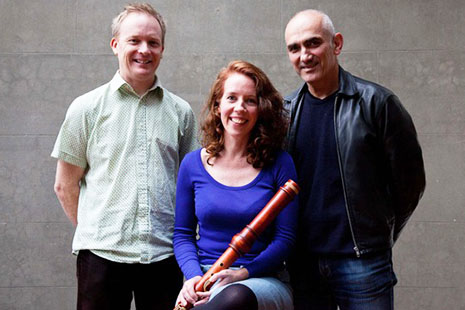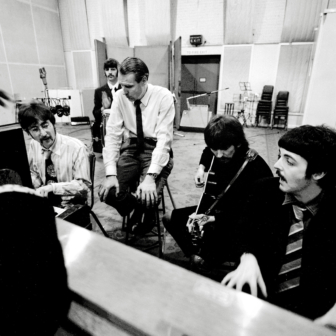IN MAY 1967, writing in the Times about the Beatles’ new LP, Sgt Pepper’s Lonely Hearts Club Band, William Mann told his readers that they should expect one day the appearance of “a popsong-cycle, a Tin Pan Alley Dichterliebe.”
Mann was the newspaper’s chief classical music critic – I doubt the Times had any other sort of music critic back then – and so it was significant that he should write about the Beatles at all, let alone take them seriously. He reviewed Sgt Pepper in a generously broad context, his article referring not only to the Rolling Stones, the Hollies, the Bee Gees, Procol Harum and Jimi Hendrix, but also to Monteverdi, Schumann, Wolf and Britten. In the Beatles’ album Mann heard music that was intended to be listened to, rather than danced to (remember Sgt Pepper was the first pop album to print its lyrics), and the next stage, he believed, was a sequence of related songs, a genuine cycle – something more than a “concept album” – in which the structure of the whole had an inherent musical and poetic logic, like the fourteen songs that comprised Schumann’s Dichterliebe.
It is usually Beethoven who is credited with the invention of the song cycle in 1816, and this first example of the genre really was circular. An die ferne Geliebte (“To the Distant Beloved”) consists of six songs with piano accompaniment that come back to where they started both in terms of subject and music. The opening theme returns at the end in the opening key of C, and the poet, who began by lamenting the absence of his lover, ends by dedicating his songs to her and thus reuniting them in art. Soon the song cycle had become one of the preferred vehicles of early German Romanticism. Schubert’s cycles include Die Schöne Müllerin (“The Fair Maid of the Mill,” 1820) and Winterreise (“Winter Journey,” 1828), and in 1840 Schumann composed a series of works in this genre, including two simply entitled Liederkreis (“Song Cycle”), Frauenliebe und -leben (“A Woman’s Love and Life”) and Dichterliebe (“A Poet’s Love”). Like the Beethoven, they are all for voice and piano, and they share his theme of lost love. They also share elements, at least, of the cyclical nature of Beethoven’s music.
As it happens, William Mann was wrong in his prediction. There have been surprisingly few attempts to create “popsong-cycles” in the past forty-five years. Concept albums have abounded, and there have been a fair few rock operas, nearly all of them profoundly embarrassing (a few merely pretentious). But although the album format seems to lend itself to the song-cycle genre, hardly anyone has really taken up the challenge. Following his mother’s death, Rufus Wainwright maintained that All Days Are Nights: Songs for Lulu (2009) was a cycle, and the voice and piano combination certainly suggested Romantic models, but one never felt that each song led naturally and inevitably to the next. And now, with the long-playing album itself under threat as people increasingly download individual tracks, the moment might be thought to have passed.
But Paul Kelly is fighting a rearguard action. He has just unveiled two song cycles in as many weeks, one on stage during the Melbourne Festival, the other on CD. The former, Conversations with Ghosts, is an ambitious thing. Lasting an hour, it includes musical settings of W.B. Yeats, Emily Dickinson, Les Murray, Judith Wright, Norman MacCaig and Alfred, Lord Tennyson, circling like satellites around a major piece of work – a ten-minute musical version of Kenneth Slessor’s “Five Bells.” Bells and death and water are recurrent themes in the songs, some of them specially written by Kelly himself, but the principal glue holding this cycle together is provided by the dark harmonies and resourceful arrangements of composer James Ledger. On stage with recorder virtuoso Genevieve Lacey and ten musicians (clarinet, horns and strings) from the Australian National Academy of Music, Ledger presides over his work from behind a keyboard, while Kelly sings and speaks the songs with admirable clarity and a sensitivity to the literary texts. The piece – which, like any successful song cycle, is considerably more than the sum of its parts – appears to have a future, at the very least as a recording.
Meanwhile, Kelly’s new studio album, Spring and Fall, is successful in a more conventional manner, its eleven songs (like Beethoven’s, Schubert’s and Schumann’s) sketching the trajectory of a troubled love affair. It is not, of course, the first pop album to do that, but it may be the first to do so in the context of a cycle that leads its listeners on a musical journey as well as an emotional one.
Kelly has always had the ability to make big things grow from little things. One of his best-known songs, “How to Make Gravy,” is in the form of a letter, setting out innocuously enough before building to a great outpouring of pain and regret. Spring and Fall performs this same trick across an album. Opening with “New Found Year,” a love song that borrows words from John Donne’s “To His Mistress Going to Bed” in a very diatonic G major, the cycle moves through a succession of keys (A minor, C, B flat, C minor…), in fact a different key for each song, until it arrives at E major. This is the key of the last three linked songs, two of which are also “letter songs,” providing the cycle’s denouement.
The harmonic trajectory of the album would be convincing if it stopped at this point, but after a long pause in the final track, Kelly returns to G major for a simple, almost artless, setting of Shakespeare’s “O Mistress Mine.” The lyric is from Twelfth Night, and this is the album’s twelfth song, returning us to the imagery of its first. The reference to Donne’s “Mistress” was never spelt out, but here, on cue, comes Shakespeare’s, Kelly reminding us that “journeys” – and, by implication, song cycles – often “end in lovers meeting.”
I shouldn’t emphasise the references and borrowings. Spring and Fall also contains some very good original lines. A song with the refrain “She’s as cold as Canada” opens with the couplet “Morning comes creeping in / Like a sick and pale child.” But above all it is the words in the context of Kelly’s music – never more tuneful, never more cogent – that give this song cycle its power. •




